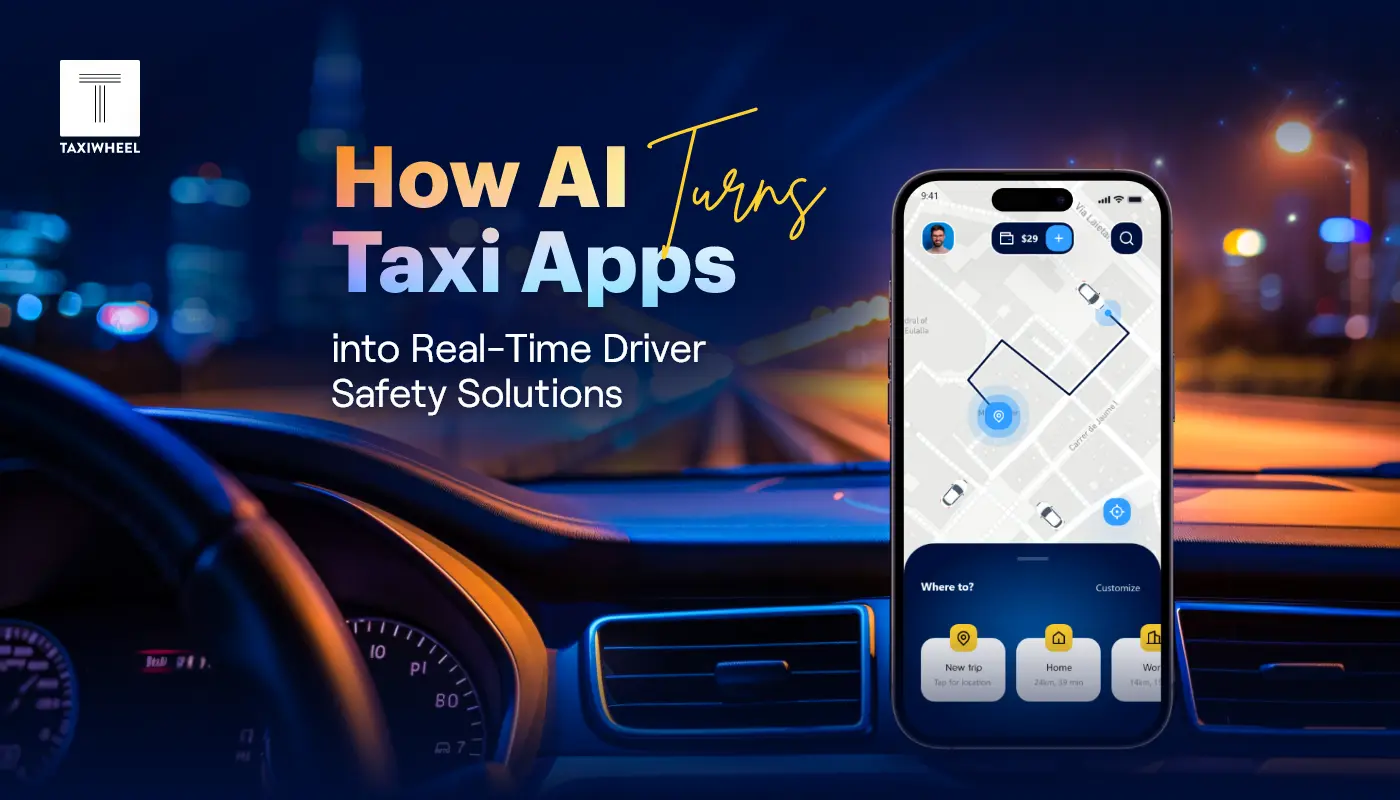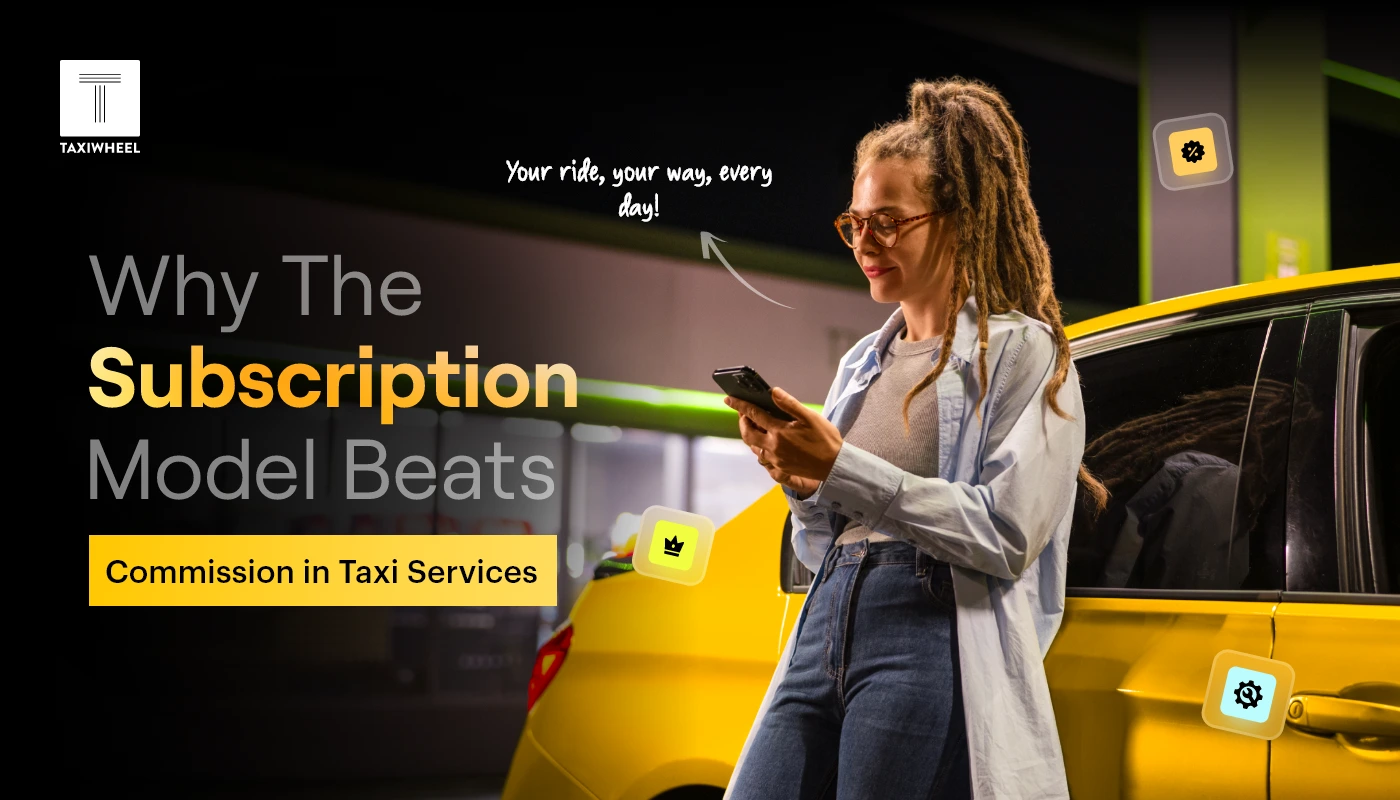
AI-Powered Driver Safety- Monitoring Behavior in Real Time
When you book a ride through a taxi app what’s the first thing you expect? Sure you want the driver to arrive quickly and the app to work smoothly. But above all, you want to feel safe. That’s what keeps people coming back to a service-or leaving it behind for good.
For companies investing in taxi app development or looking at white label taxi app options, rider safety is now the real competitive edge. The shiny features-cashless payments, sleek booking flows, promos-matter. But none of them will win back a customer who felt unsafe in a car.
That’s why more operators are turning to driver behavior monitoring systems powered by AI. These systems watch out for speeding, sudden braking, distracted driving, even signs of fatigue & give real-time nudges. Instead of fixing safety issues after the fact, businesses can spot and stop risky driving as it happens.
The Cost of Ignoring Driver Behavior
Every ride tells a story. Sometimes it’s smooth and uneventful, sometimes it leaves passengers gripping the seat. What’s at stake?
- Customer trust- A single bad trip can tank ratings and spark negative reviews.
- Brand reputation- People talk. If your taxi booking app gets a reputation for unsafe drivers, growth stalls.
- Operational costs- Accidents mean downtime, insurance claims & expensive repairs.
- Compliance risk- Cities and regulators are getting tougher on safety. Falling short isn’t an option.
Traditional approaches-training sessions, customer feedback, occasional spot checks-don’t cut it anymore. They’re reactive & they rely on human memory or judgment. Real-time monitoring flips that on its head.
How Real-Time Monitoring Actually Works
Here’s a simple breakdown of how these systems fit into a taxi app solution-
- Data comes in. Sensors, GPS, or even the driver’s phone collect info-speed, acceleration, braking patterns. Dashcams can pick up distraction or drowsiness.
- AI spots the patterns. The driver’s behavior gets compared against safe benchmarks. For example- harsh braking three times in five minutes? That’s flagged.
- Alerts get sent. Drivers receive a quick buzz, ping, or voice prompt right inside their app. Fleet managers see what’s happening on the admin panel.
- Reports follow up. End-of-day or weekly reports highlight areas to improve. Think of it as a coaching system, not just surveillance.
It’s not about micromanaging every move. It’s about catching red flags early and nudging drivers to self-correct.
Why It’s Good for Everyone
Passengers
They get peace of mind. Knowing their ride is monitored in real time makes them more likely to rebook-and recommend your taxi app to others.
Drivers
The best systems don’t just punish; they help drivers improve. With clear feedback and even incentives for safe driving, monitoring becomes a motivator.
Fleet Owners
Safer driving equals fewer accidents, which means lower insurance, fewer repairs & less downtime. It’s an investment that pays itself back.
Regulators
Compliance gets easier when safety is built into your taxi app development solution. No scrambling to prove standards-you’ll already have the data.
Putting Safety into Your Taxi App Development Strategy
When businesses explore taxi app development, it’s tempting to focus on core features first-booking flows, maps, payments. Safety often comes later. That’s a mistake.
Building in a driver behavior monitoring system from the start gives you a stronger foundation. Here’s how it ties into the bigger strategy-
- White label taxi app advantage- If you’re using a ready-made platform, check if safety modules can be integrated. It’s better than tacking them on later.
- Custom development- Going bespoke? Make safety central in your scope. Ask developers how real-time alerts and reporting can connect with your admin panel.
- Scalability- Whether you start with 50 cars or 5,000, the system should scale without breaking.
Examples You’ll Recognize
Big players already lean on this tech. Uber uses telematics to flag harsh braking or speeding. Lyft tracks distracted driving. These aren’t “extras”-they’re core parts of their taxi app solutions.
The good news? You don’t need Silicon Valley’s budget to do the same. White label taxi app providers now offer similar tools for start-ups and mid-sized operators. That means smaller fleets can compete on safety without building everything from scratch.
A Few Challenges (and How to Handle Them)
- Privacy concerns
Drivers worry they’re being watched too closely. Be transparent about what’s tracked, why it matters & how it benefits them. - Costs
Sensors, cameras & AI systems add upfront cost. But compare that against accident claims and insurance premiums & the math shifts quickly. - Driver resistance
No one likes being judged. Incentives, coaching & recognition help turn monitoring into support instead of punishment. - Integration headaches
The driver behavior monitoring system should sit neatly inside your taxi app development solution-not feel bolted on. Work with vendors who know this space.
Where It’s Headed Next
We’re still at the early stages. The future of safety in taxi apps looks even sharper-
- Predictive alerts- AI will anticipate risky conditions (like heavy rain plus speeding) before they escalate.
- Connected fleets- Cars sharing safety data with each other, not just the central system.
- Personal coaching- Drivers getting personalized tips based on their own data, not generic training.
- Autonomous prep- These systems are paving the way for self-driving fleets by training the algorithms today.
Safety is becoming less of a “feature” and more of a baseline expectation in taxi app solutions. The winners will be the ones who treat it as part of the brand promise, not a checkbox.
Read More: Why the Subscription Model Is Winning Over Commission-Based Taxi Services
Wrapping Up
In ride-hailing, speed and price will always matter. But safety is what really decides loyalty. If your taxi app puts safety front and center, customers notice-and they return.
A driver behavior monitoring system isn’t just tech jargon. It’s the difference between reactive problem-solving and proactive protection. And for businesses exploring taxi app development, it’s the smartest long-term bet you can make.
So the next time someone books through your taxi booking app, ask yourself- are you only moving them from A to B, or are you also guaranteeing they feel secure every mile of the way?
Frequently Asked Question
It does happen-sharp braking to avoid a pedestrian might look like “aggressive driving.” Most systems let managers review flagged trips alongside GPS data or dashcam footage. This way, operators can separate genuine safety concerns from unavoidable maneuvers. It’s important to train managers to use context, not just raw alerts, when evaluating drivers.
Drivers often worry that constant monitoring will reduce ride acceptance or penalize them unfairly. The key is tying safe driving to rewards-like fuel bonuses, weekly incentives, or higher priority for ride assignments. When drivers see that the driver behavior monitoring system directly helps them earn more or get better ratings, acceptance usually follows.
You don’t always need expensive black boxes. Many white label taxi apps now use smartphones’ built-in sensors to track speed, braking & acceleration. Adding a low-cost dashcam can improve accuracy. Larger fleets may invest in dedicated telematics units, but small operators often start with mobile-first monitoring and scale up later.
Latency is a big factor. A good taxi app solution should send nudges or alerts within seconds-any slower & the feedback loses value. That’s why integration with the driver app is critical; alerts should show up as in-app notifications or gentle audio cues while the trip is still in progress.
Yes, but with limitations. The system can still capture raw driving data offline (like braking or acceleration) and upload it once the device reconnects. Real-time alerts may lag in low-network zones, but periodic syncing ensures no trip data is lost. For rural or semi-urban operators, it’s worth asking developers about offline-first capabilities in their taxi app development solution.
Recent Blogs

For more than a decade, commission-based models have been the backbone of ride-hailing platforms. Companies like Uber and Lyft built their empires by charging drivers a percentage from every trip. It worked in the early years, but the cracks in this system have become harder to ignore. Drivers complain about shrinking margins, passengers face unpredictable […] Read more

The ride-hailing industry is rapidly evolving—and so are the risks. Every time a rider books a trip, or a driver checks a route, valuable data moves through the system. For platform owners, this isn’t just about app performance. It’s about protecting the information that fuels the business. From payment details to real-time locations, taxi app […] Read more

A quiet but powerful shift is underway in the ride-hailing space. Instead of slicing every fare with commissions, more taxi platforms are turning to driver subscriptions—a model where drivers pay a flat fee daily, weekly, or monthly, and keep 100% of their earnings. This isn’t just about making drivers happier, it’s about building a smarter […] Read more